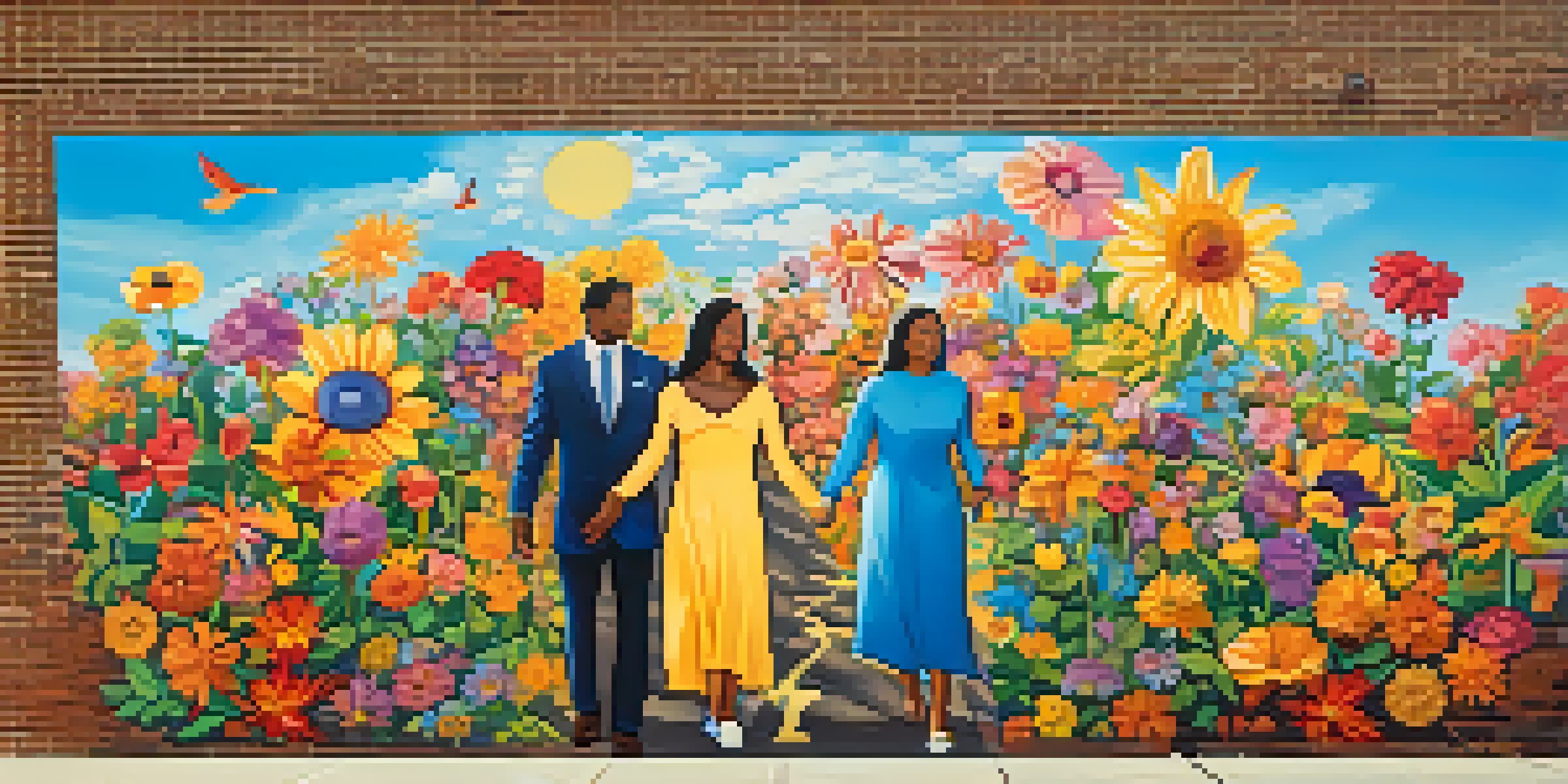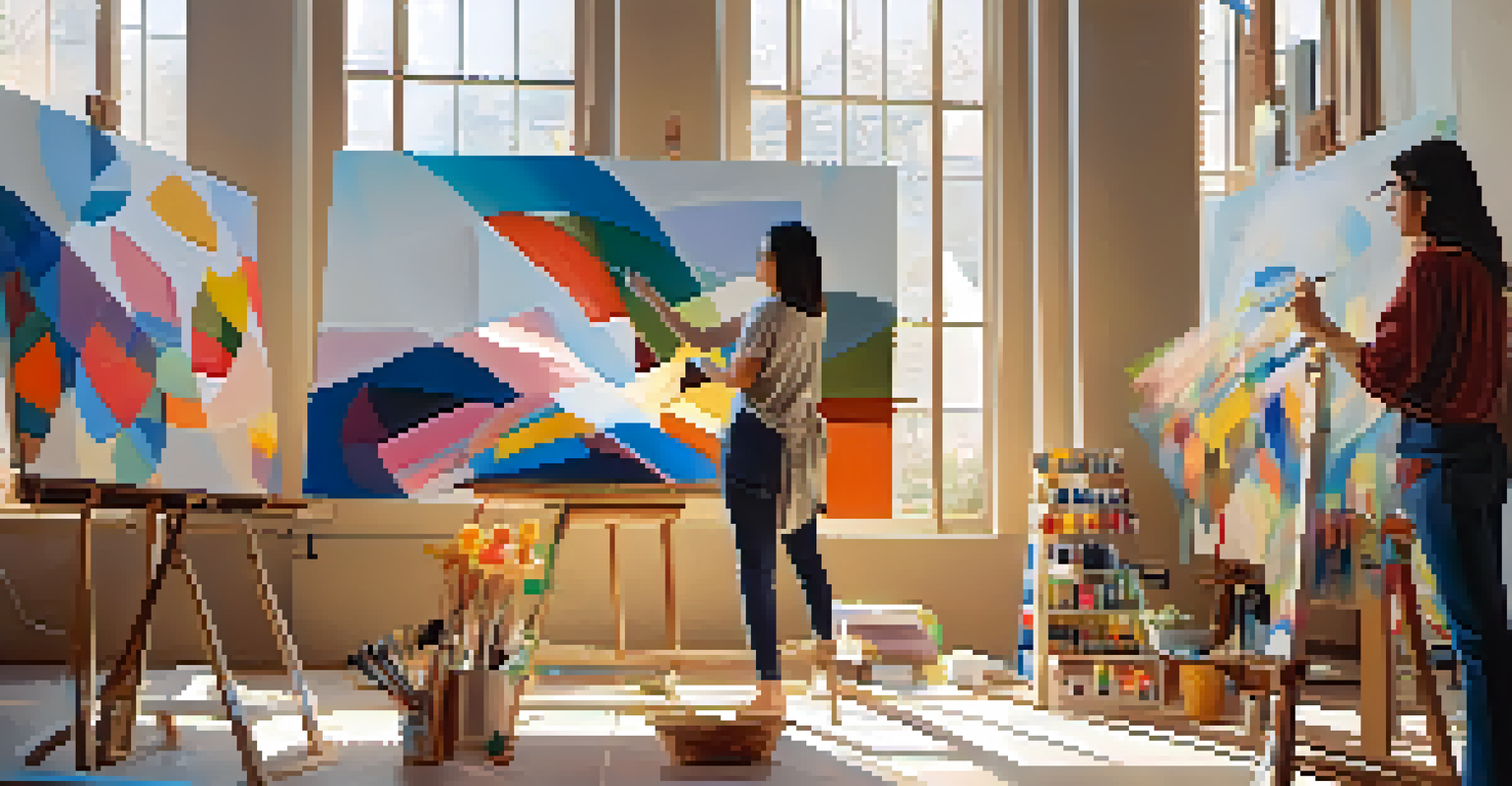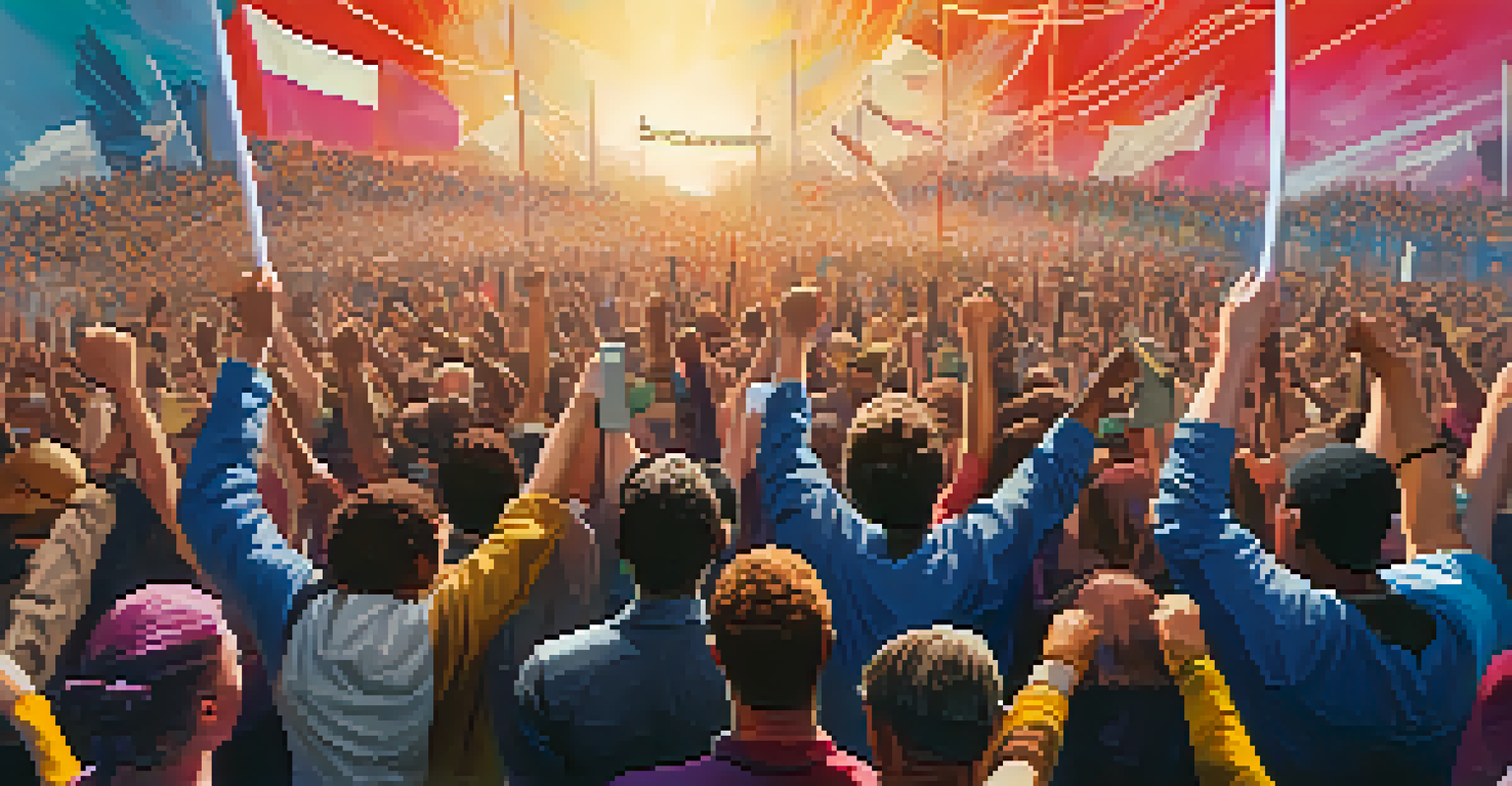The Intersection of Art and Activism: A Historical Overview

Understanding Art as a Vehicle for Change
Art has always been a powerful tool for expression, conveying emotions and ideas that resonate deeply with audiences. Throughout history, artists have used their medium to challenge societal norms and provoke thought, often pushing boundaries to highlight injustices. By transforming personal experiences into art, they provide a voice to the marginalized, sparking dialogue and inspiring action.
Art is not freedom from discipline, but disciplined freedom.
One of the most striking examples is the Harlem Renaissance, where African American artists used literature, music, and visual arts to celebrate their culture while addressing racial inequality. Their work not only reflected the struggles of their community but also fostered a sense of pride and empowerment. This intersection of creativity and activism created a lasting impact on American culture and civil rights movements.
Moreover, art's unique ability to communicate complex issues in relatable ways makes it an essential ally in activism. Whether through street murals, protest songs, or performance art, creators can encapsulate the essence of social movements, making them accessible and engaging to a wider audience.
The Role of Propaganda in Art and Activism
Throughout history, art has often been utilized as a form of propaganda, serving to promote political ideologies and mobilize citizens. Governments and organizations have recognized the potential of visual art to shape public opinion, leading to the creation of posters, films, and other media that convey powerful messages. This strategic use of art can galvanize support for various causes, from war efforts to social reforms.

For instance, during World War I and II, countries produced iconic propaganda posters that encouraged enlistment and showcased national pride. These images became immediately recognizable, tapping into emotions to drive action. By using art to craft compelling narratives, they effectively engaged the public in matters of national importance.
Art as a Catalyst for Change
Art serves as a powerful medium for expressing social issues, fostering dialogue, and inspiring action among communities.
However, the line between propaganda and authentic activism can sometimes blur. While propaganda seeks to manipulate perceptions, true artistic activism aims to reflect genuine social issues, often leading to a more profound and lasting impact on society.
Feminism and the Arts: A Powerful Collaboration
The feminist movement of the 20th century exemplifies the powerful intersection of art and activism. Women artists began to challenge not only gender roles within society but also the art world itself, which historically marginalized their contributions. By creating works that expressed their experiences and struggles, they highlighted the need for gender equality and representation.
The artist must be sacrificed to their art. Like the bees, they must put their lives into the sting they give.
Artists like Judy Chicago and Barbara Kruger used their platforms to confront issues such as reproductive rights, domestic violence, and workplace inequality. Chicago’s installation, 'The Dinner Party,' showcases the achievements of women throughout history, serving as both a piece of art and an educational tool. Such works encourage reflection and dialogue, pushing the feminist agenda into the public consciousness.
This collaboration between feminism and art continues to thrive today, with artists using their voices to advocate for social justice. The result is a rich tapestry of creative expression that not only entertains but also educates and empowers.
Street Art: The Voice of the People
In recent decades, street art has emerged as a significant form of activism, bringing art directly to public spaces. Artists like Banksy and Shepard Fairey have utilized graffiti and murals to comment on social and political issues, making their work accessible to a broad audience. This form of art often reflects the sentiments of the community, serving as a canvas for collective voices and concerns.
Street art’s ephemeral nature adds to its appeal, as it can be quickly created and just as quickly erased, reflecting the urgency of the messages it conveys. For example, murals addressing police brutality or climate change resonate powerfully in urban landscapes, urging passersby to engage with these pressing issues. This immediacy fosters a connection between the artist and the community, amplifying the call for change.
The Power of Street Art
Street art provides a public platform for activism, making social and political issues accessible to a wider audience.
Moreover, the rise of social media has allowed street art to reach global audiences, sparking conversations beyond local contexts. This digital sharing transforms murals into viral content, turning local activism into a worldwide movement.
Film and Theater: Storytelling as Activism
Film and theater have long been instrumental in raising awareness about social issues and inspiring activism. Through storytelling, filmmakers and playwrights can explore complex narratives that resonate with audiences on a personal level. This emotional connection often drives viewers to reflect on their own beliefs and inspires them to take action.
Consider films like 'Selma,' which chronicles the civil rights movement and emphasizes the struggles faced by activists. By dramatizing these historical events, filmmakers can illuminate the ongoing fight for justice and equality. Similarly, theater productions like 'A Raisin in the Sun' address themes of racism, poverty, and the quest for identity, encouraging audiences to engage with these critical issues.
Moreover, documentary filmmaking has gained prominence as a means of activism, shedding light on underreported stories and marginalized voices. Documentaries not only inform but also empower viewers, providing them with the knowledge and motivation to advocate for change.
Digital Art and Social Media: The New Frontiers
In the digital age, art continues to evolve, with social media serving as a new platform for activism. Artists can now share their work instantaneously, connecting with global audiences and raising awareness about pressing issues. This democratization of art allows anyone with a smartphone to contribute to conversations about social justice, human rights, and environmental concerns.
For example, digital campaigns like #BlackLivesMatter use powerful imagery and videos to highlight systemic racism and police violence. These online movements often spark real-world protests, demonstrating the tangible impact of digital art and activism. By using hashtags, artists create a sense of community and solidarity, encouraging collective action.
Digital Art Drives Modern Activism
In the digital age, social media and online platforms enable artists to share their work globally, amplifying movements for social justice.
Additionally, virtual art exhibitions and interactive installations have emerged, allowing people to engage with art in innovative ways. This shift not only broadens the definition of art but also enhances its role in activism, making it more accessible than ever.
The Future of Art and Activism: A Continuous Journey
As we look to the future, the relationship between art and activism is likely to grow even stronger. Artists will continue to respond to social issues, using their creativity to challenge injustice and inspire change. This ongoing dialogue between art and activism creates a dynamic landscape that reflects the evolving needs and aspirations of society.
Moreover, the integration of technology into art practices will open new avenues for expression and activism. Virtual reality, augmented reality, and other digital mediums can elevate the impact of artistic messages, making them more immersive and engaging. This evolution presents exciting opportunities for artists to reach broader audiences and foster deeper connections.

Ultimately, the intersection of art and activism is a testament to the resilience of the human spirit. Through creativity, individuals can confront the challenges of their time, ensuring that the quest for social justice remains vibrant and ongoing.